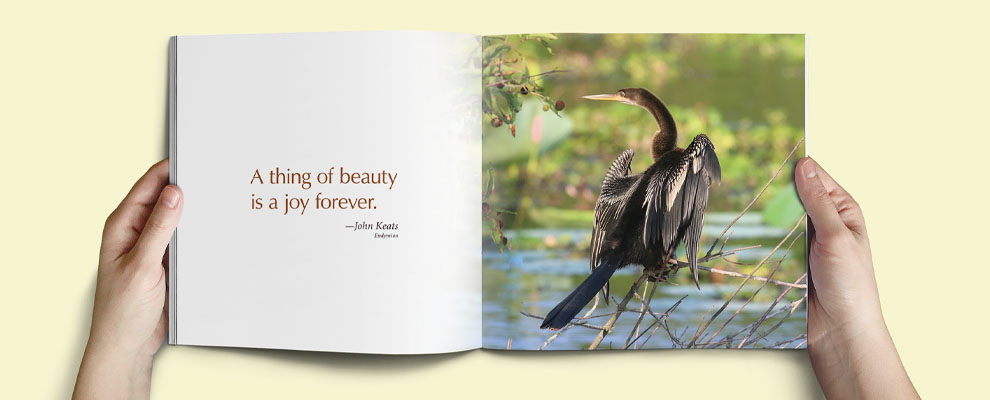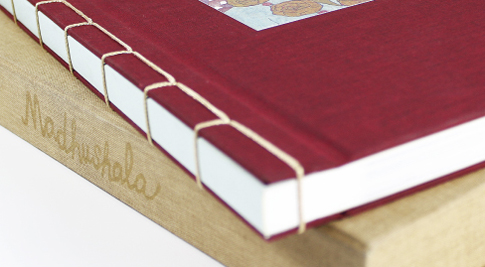The Hidden Truths Behind Successful art book Projects
The Hidden Truths Behind Successful art book Projects
Blog Article
Discover the Vital Guide to Art Book Printing for Aspiring Artists and Publishers
As an aspiring artist or author, understanding the nuances of art book printing is important to bringing your vision to life. You'll require to think about various elements, from picking the appropriate kind of book to ensuring color accuracy and picking appropriate products. Each choice impacts the end product greatly. What are the vital components you should focus on to produce a magnificent art book that absolutely represents your job?
Understanding Various Sorts Of Art Books
When you plunge into the world of art publications, you'll rapidly find that they come in various forms, each tailored to various artistic expressions and audiences. Coffee table books commonly display stunning visuals, excellent for laid-back surfing, while essays dive deep into an individual musician's work, providing context and insights. If you have an interest in details art motions, exhibit magazines use comprehensive paperwork of programs, featuring essays and critiques.
For instructional objectives, art guidebooks and method publications lead you through different mediums and designs, making them important for aspiring musicians. Finally, limited edition or artist publications blur the lines between art and literary works, typically incorporating one-of-a-kind style aspects or hand-made features. Comprehending these kinds helps you establish what resonates with you and what could finest match your audience. Each format offers its function, and understanding their differences can improve your art book trip.
Choosing the Right Paper and Materials
Choosing the right paper and materials can significantly influence the overall quality and feeling of your art book. Start by thinking about the kind of artwork you have. For lively colors and detailed information, go with a glossy finish or a heavyweight matte paper that enhances visual depth. If your job includes softer tones or textures, an all-natural or uncoated paper can offer a cozy, welcoming touch.
Think of the weight of the paper, as well. Thicker options frequently lend a more professional look, while lighter papers can minimize printing expenses. Don't fail to remember about the binding products; a sturdy cover can secure your pages and contribute to the book's visual.
Finally, think about sustainability. Environment-friendly options are getting appeal and can show your worths as an artist. By carefully selecting your paper and products, you'll guarantee that your art book not just looks wonderful yet likewise really feels unique in the hands of your readers.

Selecting the Finest Printing Strategies
When it concerns publishing your art book, choosing between balanced out and electronic printing can greatly affect your final product. You'll additionally wish to think about just how paper high quality influences the general look of your artwork. Allow's check out these key printing methods to find the very best suitable for your project.
Countered vs. Digital Printing
While both offset and digital printing have their benefits, selecting the ideal technique for your art book can greatly affect the last product. Offset printing provides high-grade images and lively shades, making it perfect for larger print runs. Ultimately, your choice needs to align with your creative vision and circulation method, making certain that your art book shows the high quality you want.
Paper High Quality Factors To Consider
Choosing the right paper top quality can significantly enhance the aesthetic charm and tactile experience of your art book. For prints, a shiny surface can make images pop, while a matte finish provides a softer, much more subtle appearance.
Following, consider the sustainability of your option. Environmentally friendly options are coming to be significantly prominent and can interest environmentally-conscious viewers. Ultimately, request samples to see exactly how various documents deal with your art work, making sure the last item shows your vision flawlessly.
Making Sure Color Precision in Your Prints
To attain sensational prints, you require to focus on color precision from the beginning. You'll intend to utilize color calibration techniques to verify your display and printer remain in sync. In addition, proofing your job before the final print run can help capture any kind of discrepancies, assuring your art looks equally as you pictured.
Shade Calibration Methods
Assuring color accuracy in your prints begins with efficient color calibration strategies that aid maintain uniformity between your electronic images and final published products. Next off, select a color account suited for your printing process, like CMYK for print products. By continually using these methods, you'll boost the overall high quality of your art prints and far better share your artistic vision.
Proofing for Accuracy
While you may believe your electronic images are ready for print, proofing is crucial for achieving color accuracy. Prior to dedicating to a complete print run, always request an evidence from your printer.
If changes are required, communicate clearly with your printer concerning your wanted results. Do not wait to demand multiple proofs if needed; it's worth the financial investment to obtain it. Eventually, comprehensive proofing assurances that your artwork is stood for as you envisioned it, keeping your artistic stability throughout the printing procedure.

Designing Layouts That Enhance Your Artwork
When you create formats for your art book, it's necessary to contemplate just how each element communicates with your artwork. Goal for an equilibrium look at this now in between visuals and text, guaranteeing neither outweighes the other. Use white area tactically; it offers your art work room to take a breath and draws focus to its information.
Think about the circulation of your book. Set up photos in such a way that guides the reader's eye, developing a story or thematic progression. art book. Differ the sizes and positionings of your artwork to maintain the format vibrant and interesting
Select typefaces that enhance your art work without distracting from it. Maintain text concise and appropriate, providing context or insight that improves the visitor's experience.
Finally, test different designs. Print examples to see just how the designs equate on paper, and readjust as needed. By thoughtfully developing your formats, you'll produce a visually appealing art book that reverberates with your target market.
Binding Choices for a Specialist Complete
Selecting the right binding option can greatly affect the general discussion of your art book. You'll wish to take into consideration both aesthetic appeals and toughness when making your option. Popular choices consist of excellent binding, which offers a sleek appearance and is ideal for thicker publications; saddle stitching, suitable for smaller sized booklets; and spiral binding, which allows pages to lay flat for simple watching.
If you're intending for a costs feeling, case binding is an outstanding choice, supplying a tough cover and a professional look (art book). Don't ignore the cover product; alternatives like fabric, natural leather, or a glossy finish can elevate your book's allure
Whatever choice you select, make sure it matches your art work and enhances the reader's experience. Take your time to consider the benefits and drawbacks of each method, so your last item mirrors the high quality of your creative vision.
Preparing Your Declare Print Readiness
To guarantee your art book is print-ready, you'll need to pay very close attention to submit preparation. Beginning by establishing your paper size to match your preferred print measurements. Use high-resolution images-- 300 DPI is the requirement-- to determine sharp, dynamic visuals. Transform your files to CMYK setting, as this shade room is best for printing. Do not forget to include hemorrhage locations, generally an extra 0.125 inches around your pages, to stop any white edges after trimming.
Additionally, install your font styles or transform message informative post to describes to stay clear of any kind of font concerns. Save your operate in a PDF format, as this is the most approved file kind for printers. Double-check your apply for any type of typos or design errors, as adjustments can be costly after the fact. Finally, consider producing a proof to evaluate before the last print run. Complying with these steps will certainly aid you achieve a polished, professional art book.
Frequently Asked Concerns
What Is the Typical Expense of Printing an Art Book?
The standard cost of publishing an art book varies, however you can expect to pay anywhere from $5 to $20 per copy, relying on variables like size, paper quality, and printing quantity.
How Can I Find a Reliable Printing Firm?
To locate a reputable printing business, start by looking into on the internet testimonials and asking other musicians for recommendations. Compare quotes, inspect portfolios, and connect your requirements plainly to ensure they over here understand your vision and top quality expectations.
What Is the Typical Turnaround Time for Printing?
The common turn-around time for printing differs yet normally ranges from one to four weeks. Aspects like project intricacy and quantity can impact this. Constantly validate with your picked printer for details timelines and assumptions.
Can I Print My Art Book in Limited Quantities?
Yes, you can most definitely publish your art book in limited quantities. Lots of printing business use short-run choices, permitting you to produce simply the number you require, making it less complicated to manage prices and stock.
What Lawful Factors To Consider Should I Know for My Art Book?
You need to consider copyright, licensing arrangements, and design launches when creating your art book. Make particular you have the right to utilize all images and text, protecting on your own from potential legal problems later on.
Report this page